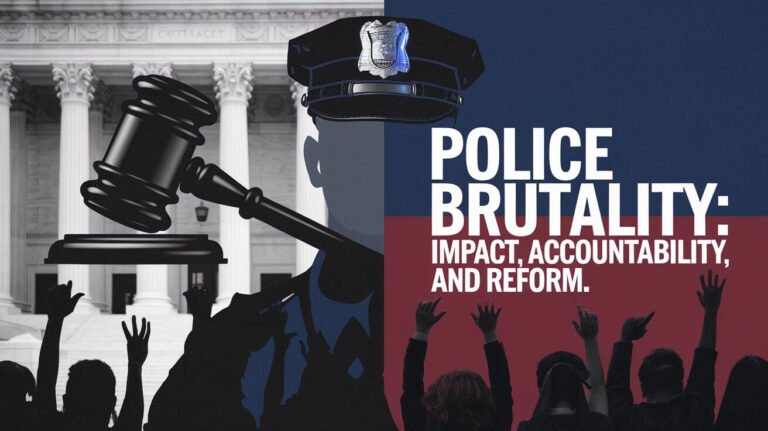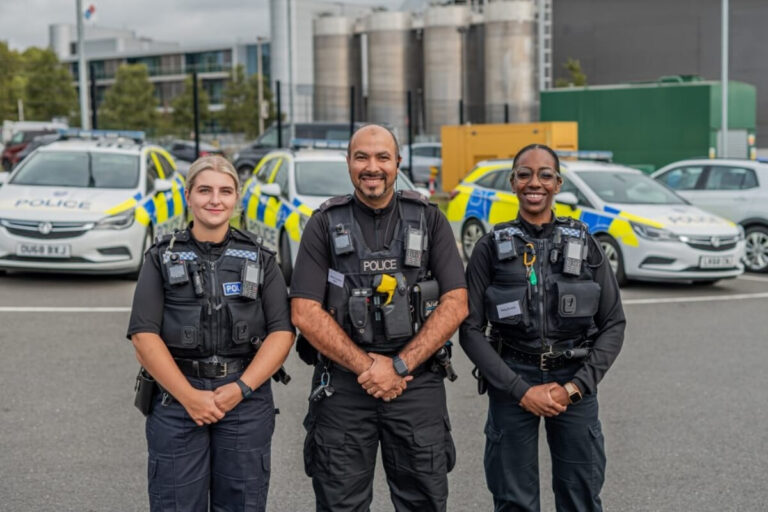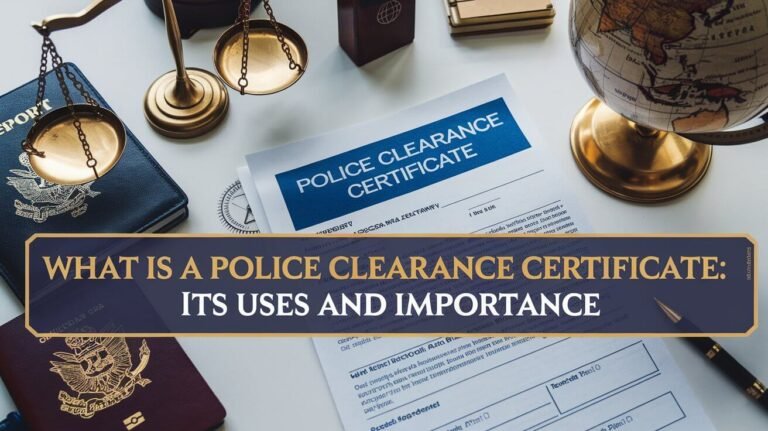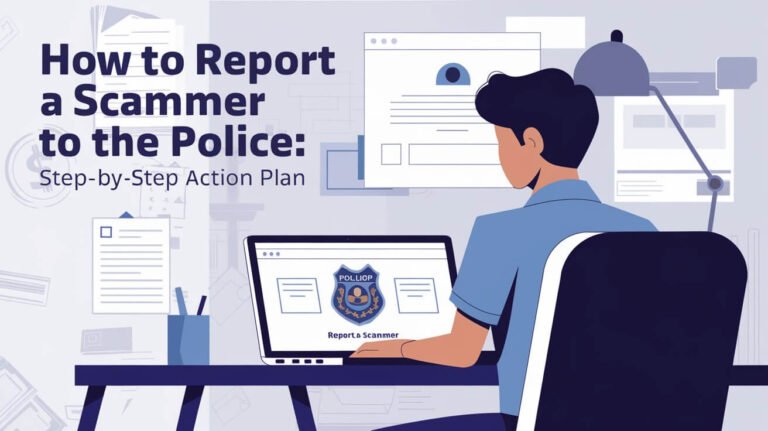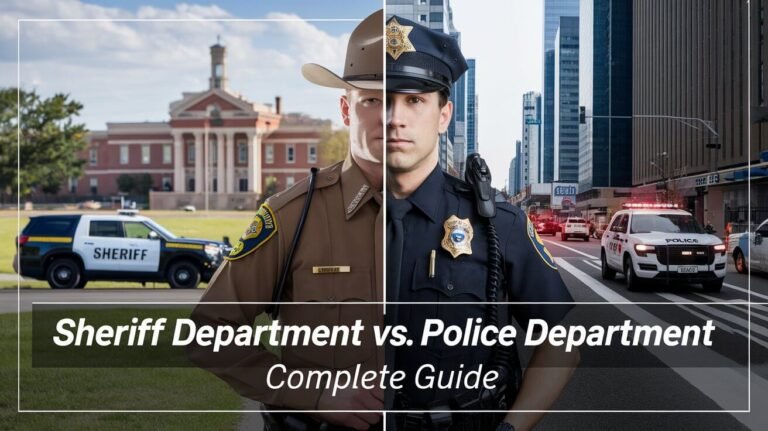10 1 Police Code & Its Role in Communication

Law enforcement agencies rely on a system of brevity codes to facilitate quick and efficient communication over radio channels. One such code is the 10-1 Police Code, which indicates a weak signal or poor radio reception. This code is part of a larger set of ten-codes used by law enforcement and public safety officials.
The use of ten-codes, including the 10-1 code, has historical roots in the early days of police radio communication when reducing speech on limited channels was crucial. By using these codes, officers can quickly convey common phrases, ensuring clear and effective law enforcement communication.
Key Takeaways
- The 10-1 Police Code signifies a weak signal or poor radio reception.
- Ten-codes are used by law enforcement for efficient radio communication.
- These codes have historical significance in the development of police radio systems.
- Clear communication is critical in law enforcement and public safety operations.
- The use of brevity codes like ten-codes enhances operational efficiency.
Meaning Behind 10-1 Police Code
Understanding the “10-1 Police Code” requires delving into its historical context and official definition within law enforcement. The “10-1” code is used to indicate poor radio reception or a weak signal, a crucial piece of information for officers relying on clear communication during operations.
Official Definition in Law Enforcement
The “10-1 Police Code” is officially defined as a signal indicating poor reception. This definition is critical in law enforcement for identifying issues with radio communication, allowing for swift troubleshooting or alternative communication methods to be employed.
Historical Development
The development of ten-codes, including “10-1,” began in the late 1930s by the Association of Public-Safety Communications Officials-International (APCO). This initiative aimed to standardize radio communication among public safety officials.
Early Radio Communication Era
During the early radio communication era, brevity codes were necessary due to technological limitations. The “10-1” code emerged as a solution to quickly convey signal strength issues.
Standardization Attempts
APCO’s efforts to standardize ten-codes, including “10-1,” were crucial. Standardization ensured that these codes were used consistently across different jurisdictions, enhancing interoperability among law enforcement agencies.
Police Radio Code Systems Explained
The use of standardized radio codes has become an essential aspect of police communication, enabling officers to quickly convey critical information. Police radio code systems are designed to facilitate efficient and clear communication among law enforcement officers, particularly in high-pressure situations.
Ten-Code Framework
The ten-code framework is one of the most widely used police radio code systems. It includes codes like “10-1,” which indicates a message has been received and understood. The ten-code system was developed to provide a concise and standardized way for officers to communicate.
Alternative Code Systems
While the ten-code framework is widely used, alternative code systems have also been adopted by law enforcement agencies. These include signal codes and plain language protocols.
Signal Codes
Signal codes are another type of police radio code system. They use a combination of numbers and codes to convey specific information. For example, signal codes might be used to indicate the status of an officer or the severity of a situation.
Plain Language Protocols
Plain language protocols have gained popularity in recent years due to their clarity and ease of understanding. Unlike ten-codes, plain language protocols use straightforward language to convey information, reducing the risk of miscommunication.
The following table compares the different police radio code systems:
| Code System | Description | Advantages |
|---|---|---|
| Ten-Code Framework | Standardized codes for common situations | Concise, widely recognized |
| Signal Codes | Combination of numbers and codes for specific information | Flexible, can be tailored to agency needs |
| Plain Language Protocols | Straightforward language for clear communication | Easy to understand, reduces miscommunication |
How Officers Apply the 10-1 Code
In law enforcement operations, the 10-1 code plays a crucial role in tactical communications. Officers use this code to report issues with radio reception, ensuring that communications are understood and acted upon appropriately.
Tactical Field Usage
In the field, law enforcement officers apply the “10-1” code during tactical operations to quickly report poor radio reception. This enables them to adjust their communication strategies accordingly.
Dispatch Center Procedures
Dispatch center procedures incorporate the “10-1” code among other ten-codes to manage responses effectively. This includes:
Response Protocols
Response protocols are established to handle situations where the 10-1 code is used. These protocols ensure that officers receive timely support when they report poor radio reception.
Documentation Requirements
Documentation requirements are also an essential part of dispatch center procedures. Officers must document incidents where the 10-1 code is used, providing valuable data for future analysis.
Key Aspects of 10-1 Code Application
| Aspect | Description | Importance |
|---|---|---|
| Tactical Field Usage | Reporting poor radio reception during operations | High |
| Dispatch Center Procedures | Managing responses with ten-codes | High |
| Response Protocols | Established procedures for 10-1 code usage | Medium |
| Documentation Requirements | Recording incidents for future analysis | Medium |
Geographic Differences in 10-1 Code Interpretation
The interpretation of the 10-1 code varies significantly across different geographic regions in the United States. This variation reflects the diverse operational needs and historical development of law enforcement communication protocols across the country.
East Coast Departments
On the East Coast, law enforcement agencies have traditionally used the 10-1 code to signify a “bad signal” or “unreadable signal.” This interpretation is consistent with the original intent of the ten-code system, which was designed to provide a standardized method of communication.
West Coast Agencies
West Coast law enforcement agencies, while generally adhering to the same ten-code framework, sometimes use the 10-1 code with slightly different nuances. For instance, some departments may use it to indicate a weak signal or a need for clarification.
Rural vs. Urban Variations
The interpretation of the 10-1 code can also differ between rural and urban law enforcement agencies. Rural departments might rely more heavily on ten-codes due to the simplicity and efficiency they offer in low-tech radio communications.
County Sheriff Departments
County sheriff departments often have their own protocols for using the 10-1 code, which can be influenced by local practices and the specific needs of their jurisdictions.
Metropolitan Police Forces
Metropolitan police forces, on the other hand, might use more advanced communication systems and have different procedures for handling signal quality issues, potentially affecting how they interpret and use the 10-1 code.
| Region | Typical Use of 10-1 Code | Notable Variations |
|---|---|---|
| East Coast | Bad or unreadable signal | Consistent with original ten-code intent |
| West Coast | Weak signal or need for clarification | Nuanced interpretation based on department |
| Rural | Signal quality issues | Heavy reliance on ten-codes for simplicity |
| Urban | Varies by department | More advanced communication systems |
Popular Myths About 10-1 Police Code
Public perception of the 10-1 police code is often skewed by inaccurate portrayals in popular media. The actual use and significance of this code in law enforcement are frequently misrepresented, leading to widespread misconceptions.
Hollywood Misrepresentations
Hollywood’s portrayal of police codes, including the 10-1 code, often prioritizes drama over accuracy. This can lead to the public having a skewed understanding of how these codes are used in real-life law enforcement situations.
Some common misrepresentations include:
- Exaggerated usage: Movies and TV shows often depict police officers using ten-codes excessively, creating an unrealistic expectation of their frequency and context.
- Inaccurate code meanings: There are instances where the meaning of codes is altered or invented for the sake of the storyline, further confusing the audience.
Public Misconceptions
As a result of these misrepresentations, the public may develop misconceptions about the 10-1 code and its role in law enforcement.
Common Errors in Media Coverage
Media coverage can sometimes perpetuate myths about police codes. For example, news reports might misinterpret or misrepresent the use of 10-1 during live broadcasts.
Civilian Scanner Enthusiast Mistakes
Civilian scanner enthusiasts, while well-intentioned, can also contribute to the spread of misinformation. Misinterpretation of codes or misunderstanding their context can lead to further public confusion.
To avoid these issues, it’s essential for both the media and enthusiasts to cross-reference information with official law enforcement resources.
Complete 10-Series Code Family
The 10-series code family encompasses a broad range of codes used in policing, facilitating efficient and clear communication among law enforcement officers and dispatchers.
Emergency Status Codes (10-1 through 10-9)
Emergency status codes are critical for reporting emergencies and status updates. For instance, the 10-1 code indicates a “Can’t hear you” or “Unable to copy” situation, signaling a communication issue that needs to be addressed.
Other codes in this range include 10-2 (Signal Good), 10-3 (Stop Transmitting), and 10-4 (Affirmative or OK). These codes enable officers to quickly convey their status or respond to situations.
Operational Codes (10-10 through 10-39)
Operational codes cover a variety of functions related to the day-to-day operations of law enforcement. Examples include 10-10 (Negative or Disregard), 10-13 (Weather/Road Report), and 10-20 (Location). These codes help in coordinating efforts and sharing information.
Administrative Codes (10-40 and Above)
Administrative codes are used for tasks that are more administrative in nature. This includes codes for shift changes and vehicle status reporting.
Shift Change Protocols
Codes like 10-41 (Beginning Tour of Duty) and 10-42 (Ending Tour of Duty) are used to signal the start and end of shifts, helping to manage personnel and resources effectively.
Vehicle Status Reporting
Codes such as 10-97 (Arrived at Scene) and 10-98 (Completed Assignment) are essential for tracking the status of officers and vehicles, enhancing situational awareness and response times.
Understanding the full spectrum of 10-series codes is essential for effective communication and coordination within law enforcement agencies.
Digital Transformation of Police Communications
The police communication landscape is undergoing a significant transformation with the advent of digital technologies. Modern law enforcement agencies are leveraging these advancements to enhance their operational efficiency and security.
Computer-Aided Dispatch Systems
Computer-aided dispatch (CAD) systems have revolutionized the way police departments manage emergency responses. These systems enable dispatchers to quickly process calls, assign units, and track responses in real-time. CAD systems have significantly improved response times and operational coordination.
Encrypted Radio Networks
Encrypted radio networks have become a critical component of modern police communications. By encrypting radio transmissions, law enforcement agencies can protect sensitive information from interception by unauthorized parties.
Security Benefits
The primary benefit of encrypted radio networks is enhanced security. Encryption prevents malicious actors from eavesdropping on police communications, thereby protecting tactical operations and sensitive information.
Public Transparency Concerns
While encrypted radio networks offer significant security benefits, they also raise concerns about public transparency. Encrypted communications can limit the ability of the public to access information about police activities, potentially hindering transparency and accountability.
The digital transformation of police communications is a double-edged sword, offering both enhanced security and potential transparency concerns. As law enforcement agencies continue to adopt advanced technologies, they must balance these competing interests to ensure effective and responsible policing.
Pros and Cons of Code-Based Communication
Code-based communication systems, such as the 10-1 police code, embody the trade-offs inherent in balancing speed against clarity. Law enforcement agencies have long utilized these systems for their operational efficiency.
Speed and Brevity Advantages
The primary advantage of code-based communication lies in its ability to convey complex information quickly and concisely. For instance, using a simple code like “10-1” to indicate “unable to copy or signal not received” allows officers to rapidly communicate their status without lengthy explanations.
Key benefits include:
- Rapid transmission of critical information
- Reduced radio chatter
- Enhanced operational efficiency
Clarity Issues During Critical Incidents
Despite the advantages, code-based communication can lead to clarity issues, particularly during high-stress situations. Misinterpretation of codes can have significant consequences.
Cross-Agency Coordination Problems
One of the significant challenges with code-based systems is the potential for confusion when different agencies, each with their own protocols, need to coordinate. This can lead to misunderstandings and delays in response.
Stress-Induced Miscommunications
High-pressure situations can exacerbate the risk of miscommunication. Officers under stress may misinterpret or misuse codes, potentially compromising the effectiveness of the response.
| Aspect | Advantages | Disadvantages |
|---|---|---|
| Speed | Rapid information transmission | Potential for misinterpretation |
| Clarity | Concise communication | Risk of confusion, especially under stress |
| Coordination | Standardized within agencies | Challenges across different agencies |
Police Academy Code Training Methods
To prepare officers for real-world scenarios, police academies utilize a range of training techniques. These methods are designed to ensure that recruits are proficient in using codes like “10-1” effectively.
Classroom Instruction Techniques
Classroom instruction provides a foundational understanding of police codes. Recruits learn the official definitions and historical context of codes, laying the groundwork for practical application.
Simulation Exercises
Simulation exercises offer hands-on experience, allowing recruits to practice using codes in simulated scenarios. This practical training is crucial for preparing officers for the stress and complexity of real-world situations.
Radio Procedure Drills
Radio procedure drills are a key component of simulation exercises, focusing on the proper use of radio protocols and code communication. Recruits practice transmitting and receiving messages using ten-codes.
Scenario-Based Practice
Scenario-based practice involves recruits in realistic scenarios that require the use of codes and communication protocols. This method helps to reinforce learning and build muscle memory, ensuring that officers can respond effectively in high-pressure situations.
Next-Generation Police Communication
The future of law enforcement communication is on the cusp of a revolution, driven by emerging technologies. As police departments continue to adopt innovative solutions, the way officers communicate and respond to incidents is undergoing a significant transformation.
Mobile Data Terminal Integration
One key development is the integration of mobile data terminals (MDTs) into police vehicles and officer equipment. MDTs enable officers to access critical information in real-time, enhancing their ability to respond effectively to emergencies. This technology also streamlines communication between officers and dispatch centers.
Voice Recognition Technologies
Voice recognition technologies are another crucial advancement in police communication. These systems allow officers to send and receive information using voice commands, reducing the need for manual data entry and minimizing distractions while on duty.
AI-Assisted Dispatch
AI-assisted dispatch systems are being explored to optimize resource allocation and response times. By analyzing data and predicting incident hotspots, AI can help dispatchers make more informed decisions.
Automated Transcription Services
Automated transcription services are also being integrated into police communication systems, providing accurate and rapid transcription of radio communications and interviews. This not only saves time but also enhances the accuracy of records.
These emerging technologies are set to revolutionize police communication, making it more efficient, accurate, and secure. As law enforcement agencies continue to adopt these innovations, the effectiveness of their operations is likely to improve significantly.
Case Studies: 10-1 Code in Major Incidents
Examining the use of the “10-1” code in significant events reveals its impact on emergency responses. The “10-1” code, indicating a signal weak or bad reception, has been crucial in situations where clear communication is paramount.
Notable Emergency Responses
In major incidents, such as natural disasters, the “10-1” code has been utilized to convey critical information efficiently. For instance, during Hurricane Katrina, the code was used to report signal degradation, allowing teams to adjust their communication strategies accordingly.
Communication Breakdowns Analysis
Despite its utility, there have been instances where the “10-1” code was associated with communication breakdowns. Analyzing these cases provides valuable insights into improving code-based communication.
Hurricane Katrina Response
The response to Hurricane Katrina in 2005 is a significant case study. Here, the “10-1” code was used extensively due to the widespread damage to communication infrastructure. The code helped in managing the response efforts by quickly identifying areas with poor signal reception.
Major Urban Incident Examples
In urban settings, the “10-1” code has been used during large-scale emergencies, such as terrorist attacks or mass protests. These incidents highlight the code’s role in maintaining operational effectiveness despite challenging communication conditions.
The analysis of these case studies underscores the importance of the “10-1” code in law enforcement communication, particularly in emergency responses and during communication breakdowns.
Ending Summary
The “10-1 Police Code” is a vital component of law enforcement communication, serving as a quick way to report poor radio reception. Understanding its meaning, history, and application is essential for appreciating the complexities of police communication.
As discussed, the “10-1” code is part of a broader ten-code system used by law enforcement agencies. The evolution of police communication technologies has led to the development of new systems, including computer-aided dispatch and encrypted radio networks.
The “10-1 Police Code conclusion” highlights the importance of effective law enforcement communication. A clear understanding of these codes and technologies is crucial for efficient policing. As technology continues to evolve, it will be interesting to see how these codes adapt to new challenges and opportunities, ultimately enhancing law enforcement communication summary.
Top Questions
What does the 10-1 Police Code mean?
The 10-1 Police Code indicates poor radio reception or a weak signal, used by law enforcement and public safety officials to quickly communicate common phrases over radio.
What is the historical background of the 10-1 Police Code?
The 10-1 Police Code was developed in the late 1930s by APCO to standardize radio communication among public safety officials, reducing speech on the radio, especially when channels were limited.
How is the 10-1 Police Code used in the field?
Law enforcement officers apply the 10-1 code during tactical operations to quickly report issues with radio reception, ensuring that communications are understood and acted upon appropriately.
Are there geographic differences in interpreting the 10-1 Police Code?
Yes, the interpretation and use of the 10-1 code can vary geographically, reflecting differences in regional law enforcement practices and communication protocols, such as between East Coast and West Coast departments.
What are some common misconceptions about the 10-1 Police Code?
The 10-1 Police Code has been subject to various misconceptions, partly due to its portrayal in media and popular culture, such as Hollywood misrepresentations, contributing to public misconceptions.
How are ten-codes, including 10-1, categorized?
Ten-codes are categorized into emergency status codes (10-1 through 10-9), operational codes (10-10 through 10-39), and administrative codes (10-40 and above), each serving distinct purposes.
How has the digital transformation impacted police communications?
The digital transformation of police communications, including computer-aided dispatch systems and encrypted radio networks, has enhanced the efficiency and security of law enforcement communications, potentially changing how codes like 10-1 are used.
What are the advantages and disadvantages of code-based communication?
Code-based communication systems, like the one using 10-1, offer the advantage of speed and brevity, but can also lead to clarity issues, especially during critical incidents or when coordinating across different agencies.
How are police officers trained to use codes like 10-1?
Police academies employ a range of training methods, including classroom instruction, simulation exercises, and radio procedure drills, to teach recruits about codes like 10-1 and ensure they are proficient in using ten-codes and other communication protocols effectively.
What is the future of police communication?
The future of police communication is likely to be shaped by emerging technologies such as mobile data terminal integration, voice recognition, AI-assisted dispatch, and automated transcription services, potentially changing how codes like 10-1 are used.
Can you provide examples of the 10-1 code being used in major incidents?
The 10-1 code has played a role in several major incidents, including emergency responses to natural disasters like Hurricane Katrina, highlighting the importance of effective code-based communication.

